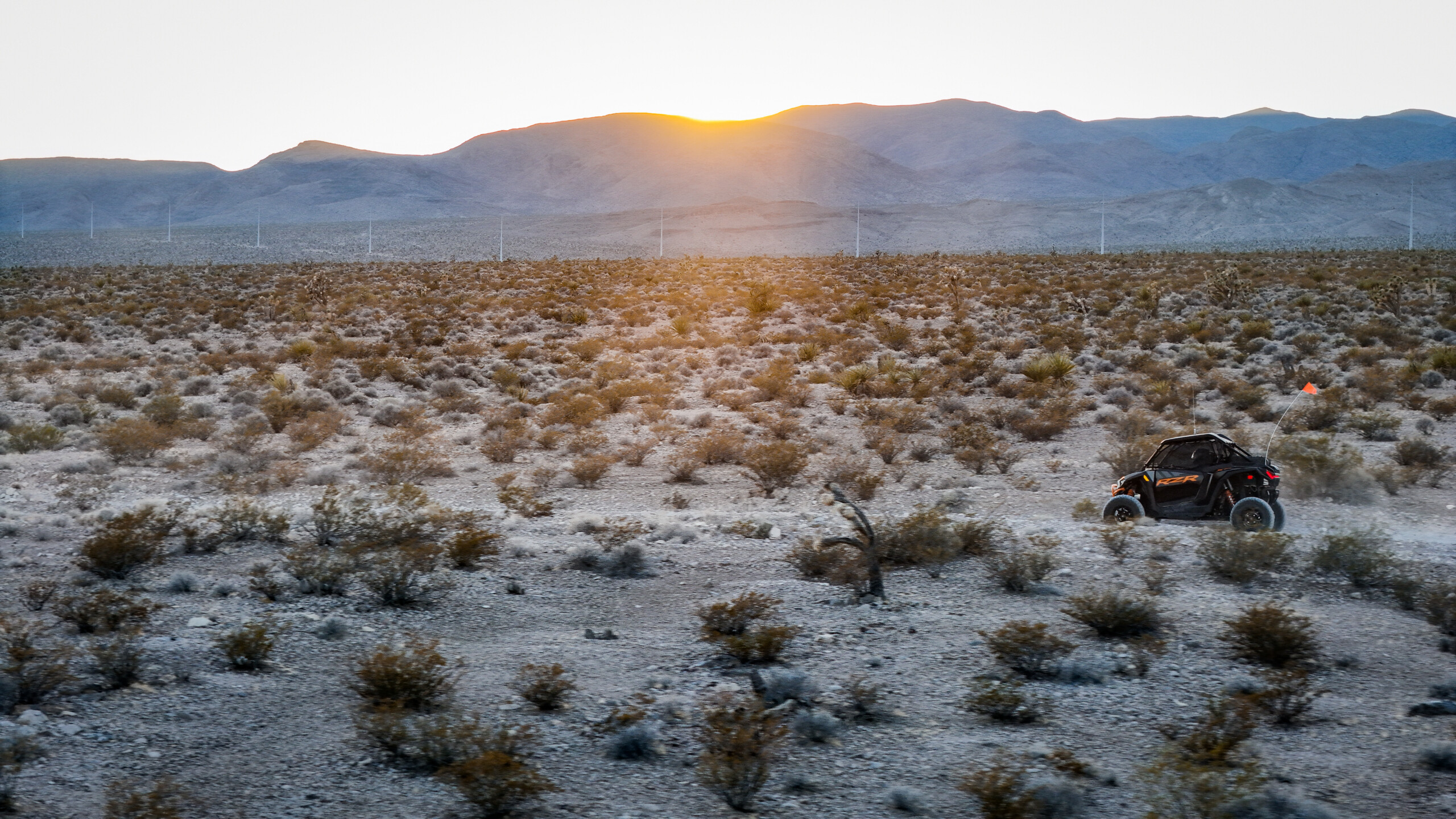Top 10 Mojave Desert Plants You will Spot on an Off-Road Adventure
Mojave Desert plants are some of the most fascinating species you can encounter while exploring the desert trails on an off-road adventure. From towering cacti to tiny wildflowers that burst into color after rare rainfalls, these plants tell the story of survival in one of the harshest environments on Earth. Observing them up close while riding a side-by-side (SXS) or RZR adds an unforgettable layer to any desert tour.
Why Mojave Desert Plants Are Unique
The Mojave Desert is home to an incredible diversity of plants that have adapted to extreme heat, low water, and sandy or rocky soils. Many of these species are found nowhere else on the planet. Their unique features—like thick, waxy leaves, deep roots, or spiny protection—allow them to conserve water and thrive in a landscape that seems inhospitable at first glance.
Learning to identify these plants enriches any off-road experience. Not only do they provide beautiful scenery, but some have cultural or ecological significance as well. For instance, the Joshua Tree is both an iconic symbol of the desert and a habitat for numerous birds and insects. You can read more about the unique flora of the Mojave at National Park Service.
1. Joshua Tree
The Joshua Tree is arguably the most iconic plant in the Mojave Desert. Its twisted, spiky branches reach skyward, creating a striking silhouette against the desert horizon. These trees can live for hundreds of years and are a key part of the ecosystem, providing shelter for birds and insects. When spotted along off-road trails, they often make perfect photo opportunities.
2. Mojave Yucca
Mojave Yucca plants feature sword-shaped leaves and a tall stalk that can bloom with clusters of white flowers. These plants are adapted to survive prolonged droughts, and their fibrous leaves were historically used by Native Americans to make ropes and sandals. The flowering season usually occurs in spring, and the sight of white blooms against the desert backdrop is unforgettable.
3. Creosote Bush
Creosote Bush is one of the most widespread shrubs in the Mojave Desert. Its resinous leaves emit a distinctive, pleasant smell after rain, often referred to as the “smell of the desert.” These shrubs are incredibly hardy, and some clones are thought to be thousands of years old, making them a living testament to desert resilience.
4. Beavertail Cactus
The Beavertail Cactus is a low, sprawling cactus with paddle-like stems that often display vibrant pink or red flowers during spring. This cactus stores water efficiently and has spines that protect it from herbivores. Off-road travelers may notice them growing near rocks or open desert flats. For more on desert cacti, visit Cactus Conservation.
5. Cholla Cactus
Cholla Cactus, sometimes called “jumping cactus” due to its easily detachable spiny segments, is both beautiful and tricky. Its cylindrical stems often bear striking flowers, and its segmented structure provides shelter for small desert animals. Exercise caution when approaching this plant during your off-road adventure.
6. Desert Marigold
The Desert Marigold is a bright yellow flower that can bring color to otherwise muted desert landscapes. These hardy perennials bloom most of the year, attracting pollinators such as bees and butterflies. They are often found along dry washes and sandy soils, making them easy to spot on off-road trails.
7. Ocotillo
Ocotillo is a tall, spiny shrub that produces brilliant red flowers at the tips of its branches, usually after rainfall. Although it appears leafless most of the year, it quickly grows small green leaves after precipitation. This plant adds striking vertical color along desert ridges and hillsides.
8. Desert Lavender
Desert Lavender is a small shrub with gray-green leaves and fragrant purple flowers. This plant thrives in dry, rocky soils and attracts various pollinators. Its scent and delicate blossoms make it a favorite among nature enthusiasts exploring the Mojave Desert on guided tours.
9. Barrel Cactus
Barrel Cactus is easily recognized by its ribbed, cylindrical shape. During spring, it blooms with yellow or orange flowers at the top. These cacti are water-storing powerhouses and are crucial for desert wildlife, which may rely on them during dry periods. Spotting a barrel cactus while driving through the desert is a reminder of how life thrives in extreme conditions.
10. Desert Globemallow
Desert Globemallow produces bright orange to reddish flowers and can grow in sandy or rocky soils. It is a hardy perennial that adds a splash of color to the Mojave landscape. Historically, Native Americans used its leaves and flowers for medicinal purposes. Observing this plant while riding an SXS or RZR allows you to appreciate its vibrant presence up close.
Tips for Observing Mojave Desert Plants Safely
While spotting these plants, it’s important to respect the delicate desert ecosystem:
- Stick to established trails to avoid damaging plants.
- Keep a safe distance from cacti to prevent injury.
- Take photos without removing or disturbing plant parts.
- Be aware of wildlife that may use plants as shelter.
By following these tips, you can enjoy the beauty of Mojave Desert plants while preserving them for future adventurers.
Why Off-Road Adventures Enhance Plant Viewing
Off-road tours, particularly in SXS or RZR vehicles, allow travelers to access remote areas where many desert plants thrive. Unlike conventional vehicles, these off-road machines can navigate sandy washes, rocky terrain, and narrow trails, providing unique opportunities to see plants in their natural habitats. Guided tours often include expert commentary on plant identification, ecology, and history, enhancing your understanding of the desert ecosystem.
Final Thoughts
Exploring the Mojave Desert offers more than just a thrilling ride; it’s a chance to connect with one of the most unique ecosystems in the world. By focusing on Mojave Desert plants during your off-road adventure, you can discover the beauty, resilience, and ecological importance of desert flora. From towering Joshua Trees to vibrant Desert Globemallows, each plant tells a story of survival in extreme conditions. Planning your SXS or RZR tour with plant observation in mind ensures a journey that is both exciting and educational.


